着色器相关
一、Vertex Shader
1. 顶点着色器处理数据流成图
2.Vertex Shader Virtual Machine(顶点着色器虚拟机)
(1)它是一个能够认识顶点着色器是怎样工作的概念模型。模型空间->投影空间;使用指令来驱动ALU。
(2)VS Shader Layout
A.指令分类:和其他程序一样,某些指令必须在其它指令调用之前
B.例子:
C.说明
version instruction:它必须是所有shader中的第一条指令。
constants instruction:使用def来定义,该指令定义的常量只能在该着色器里访问(只读),在外面是无法访
问的,和SetVertexShaderConstantX是不同的
VS一般写到一个postion register中,要不然会出错;除非你事先在应用程序中调用ProcessVerteices,接受vs的处理数据,从而导致vs的结果写入顶点缓冲区中。
(3).registers
Input registers 为ALU提供数据,运行时顶点缓冲区的数据输入到input registers。
out register
(4).Instructions
寄存器为ALU提供处理的数据,而指令则规定了ALU的操作。指令的功能主要有两个:指定数据什么时候送到
ALU;以及ALU中的计算方法。
A. VS的指令主要分为以下几类:
■ Setup instructions
■ Arithmetic instructions
■ Macro-op instructions
■ Texture instructions
■ Flow-control instructions
着色器规定了程序中使用指令槽(instruction slot)的最大数量(包括静态和动态循环的)
大部分vs指令会占用一个指令槽,而macro-op会占用多个指令槽。所以,尽量设计使用较少指令的shader。
通常,使用并行操作,或使用modifers来扩展指令集,而不增加指令和寄存器数量。
(5).Modifiers Extend the Virtual Machine
Modifers extend通过修改指令的结果、目的结果、源数据。主要包括:
■ Instruction modifiers
■ Destination register modifiers
■ Source register modifiers
二、Pixel Shader
像素着色器会处理每个绘制顶点所作用的像素,所以像素处理比顶点处理更费时间。
1. Pixel Processing
(1)Primitive Processing主要包括如下几个处理步骤:
(2)像素处理主要包括两个阶段:
阶段1:把插值后的顶点数据(如、diffuse color,specular color,texturecoordinates)转换成一个或
多个像素颜色。可以在PS中处理。
阶段2:把阶段1生成的像素颜色转换为成屏幕像素颜色(Frame-buffer blending)。在固定管线中处理。
2. Pixel Shader Virtual Machine
(1) 像素着色器主要包括如下几类寄存器:
■ Input registers provide the interpolated per-vertex data outputs from
primitive processing. Some specialty registers have been added
(such as vFace and vPos in ps_3_0).
■ Constant registers provide constants to the ALU.
■ Temporary registers are like temporary shader variables.
■ Output registers contain the shader results.
■ Flow control registers control the order that shader instructions are
executed.
■ The texture sampler (as we saw in the last section) uses texture coordinates
from the shader to sample textures. Then texture samples are
returned to the shader.
3. Shader Layout
■ A version instruction.
■ Setup instructions for defining constants. Later versions also require
inputs and outputs to be declared.
■ The rest of the instruction types: arithmetic, texture, macro-ops, flow
control, and modifiers.
注:可以使使用def来定义本地常量(只能在该着色器中使用),而使用SetPiexelShaderConstantX定义
的是全局常量。如同名,则本地常量覆盖全局常量。
4. Registers
5. Instructions
指令集的作用:A、决定哪些数据从寄存器转移到ALU中;B、ALU上的数学操作。
(1)指令的类型:
■ Setup instructions
■ Arithmetic instructions
■ Macro-op instructions
■ Texture instructions
■ Flow-control instructions
(2)和VS一样,PS也有指令数量的限制
6.Modifiers Extend the Virtual Machine
Modifers可以在ALU操作之前修改从寄存器读取的数据(不修改源寄存器里的值),同时也可以修改ALU的操作结果。

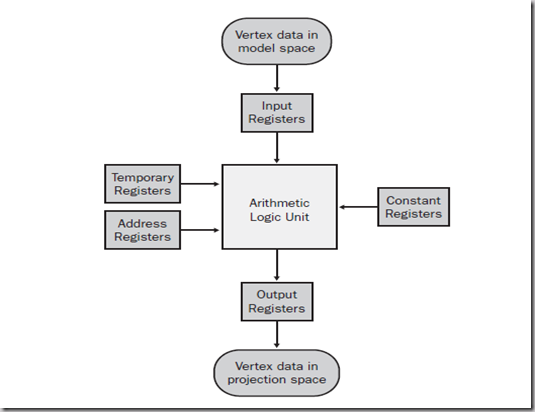
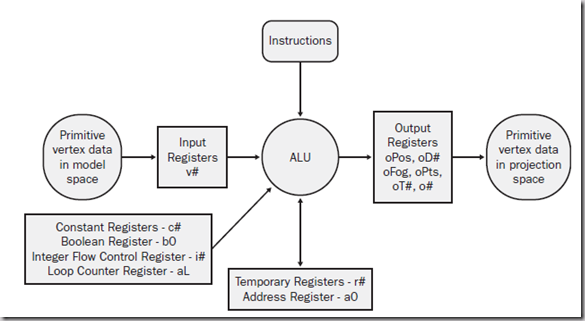

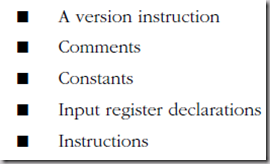
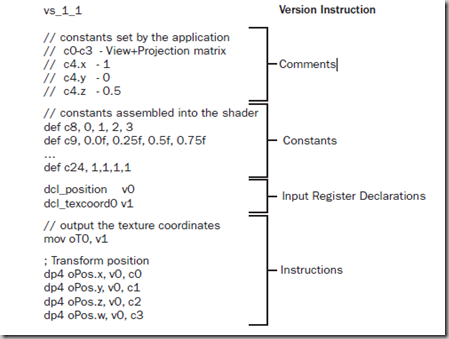

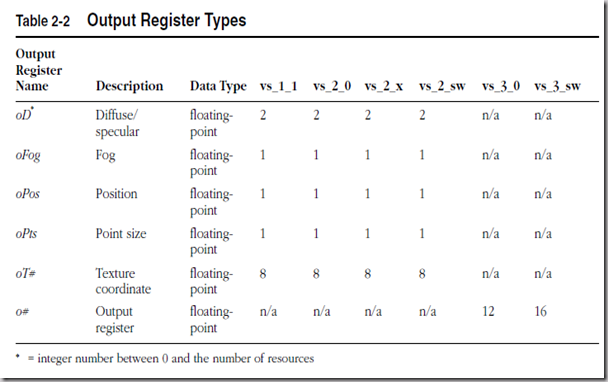
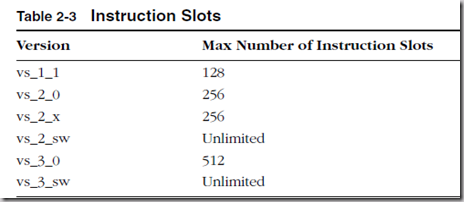


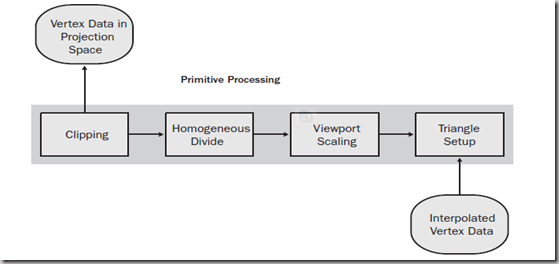
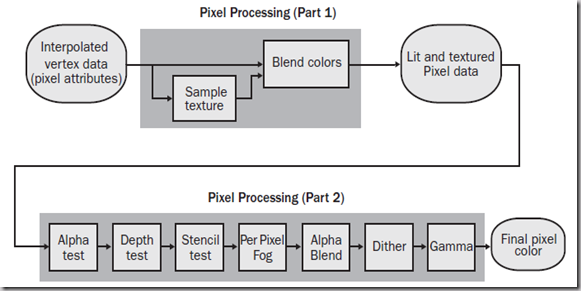
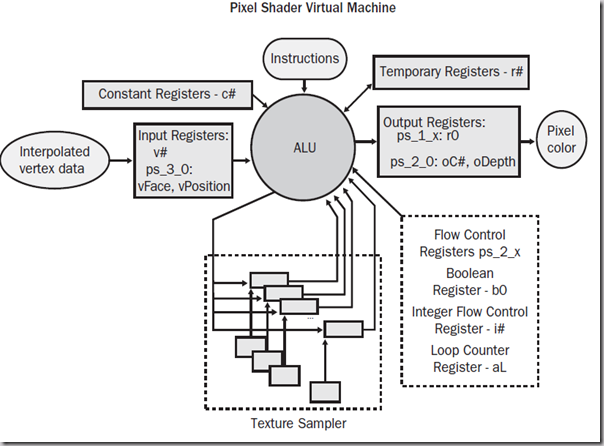

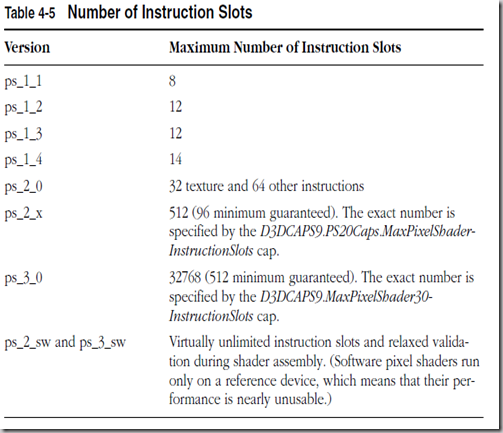
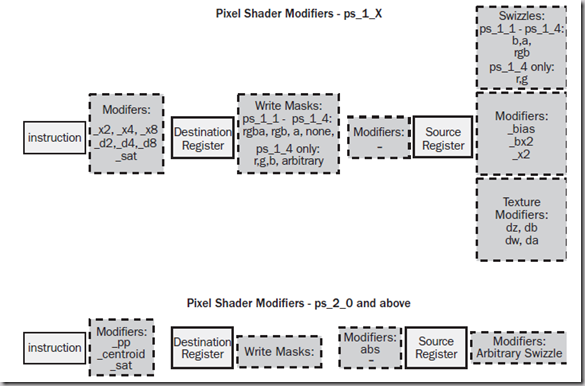


【推荐】国内首个AI IDE,深度理解中文开发场景,立即下载体验Trae
【推荐】编程新体验,更懂你的AI,立即体验豆包MarsCode编程助手
【推荐】凌霞软件回馈社区,携手博客园推出1Panel与Halo联合会员
【推荐】轻量又高性能的 SSH 工具 IShell:AI 加持,快人一步